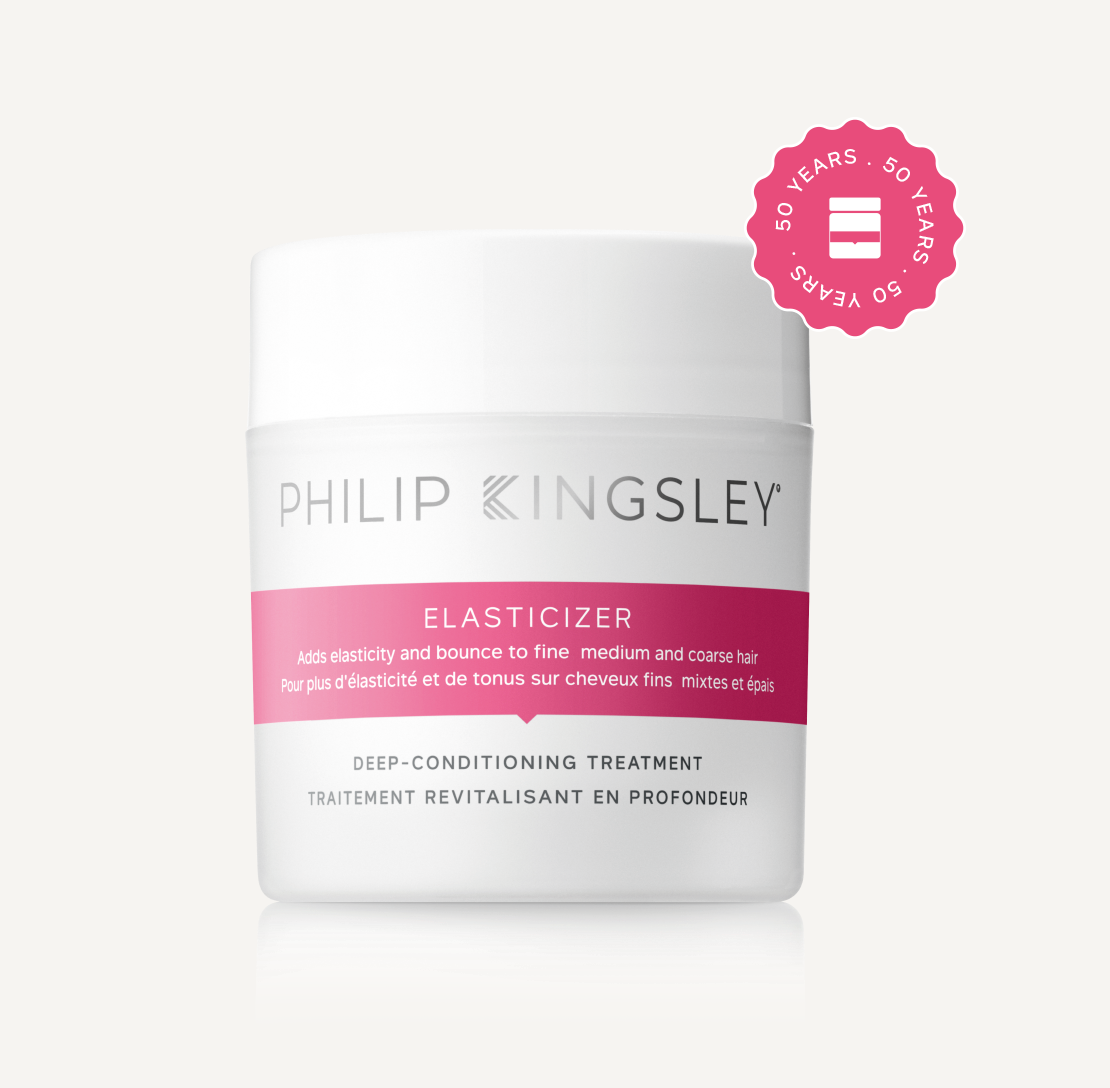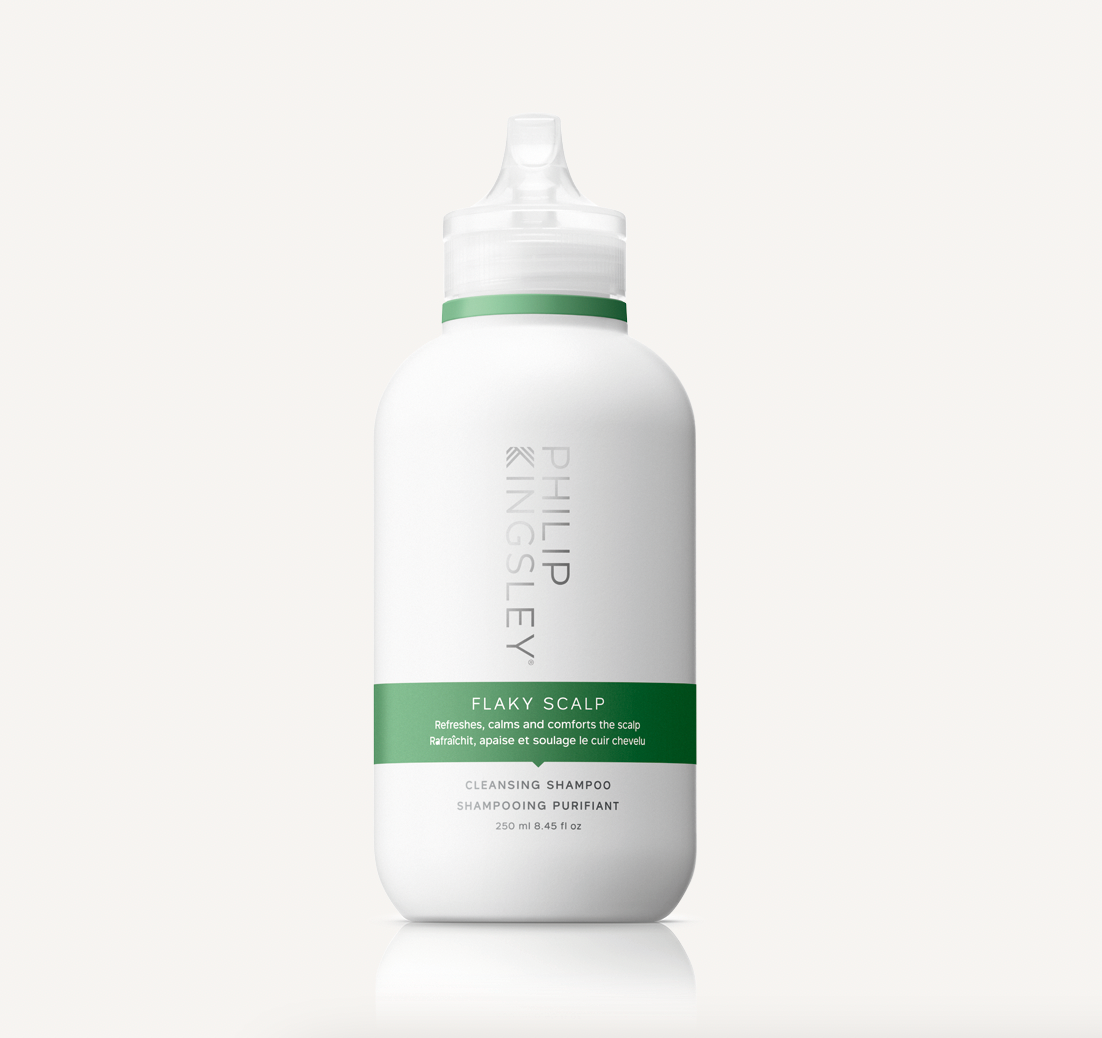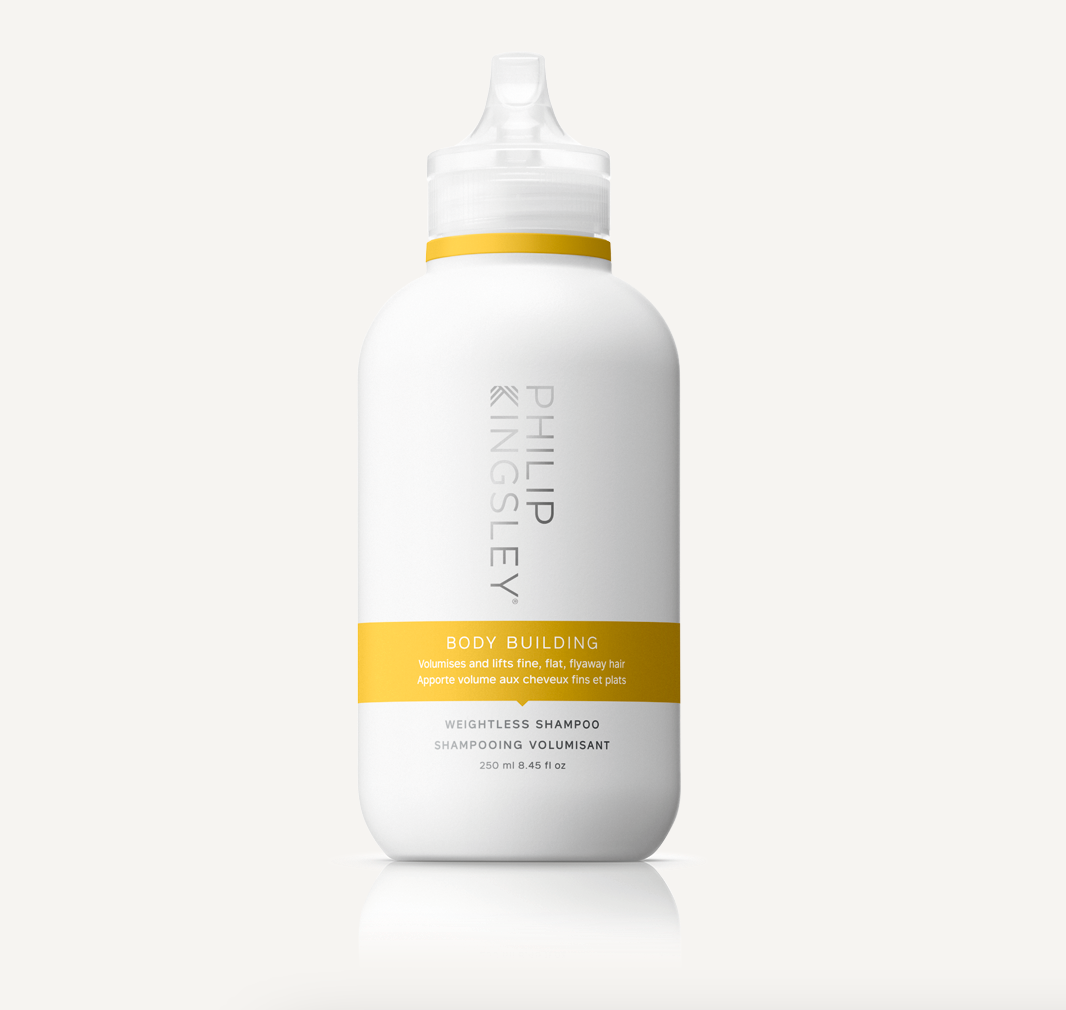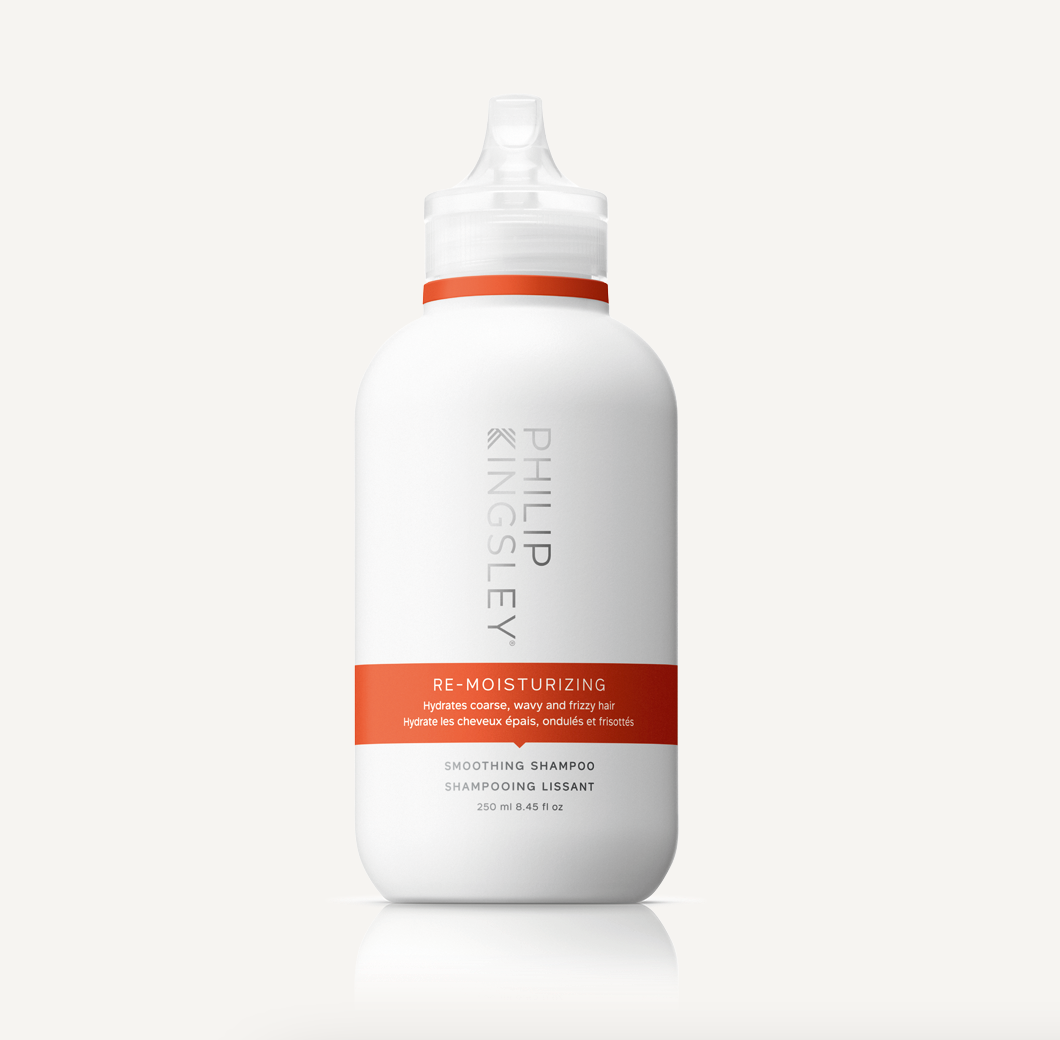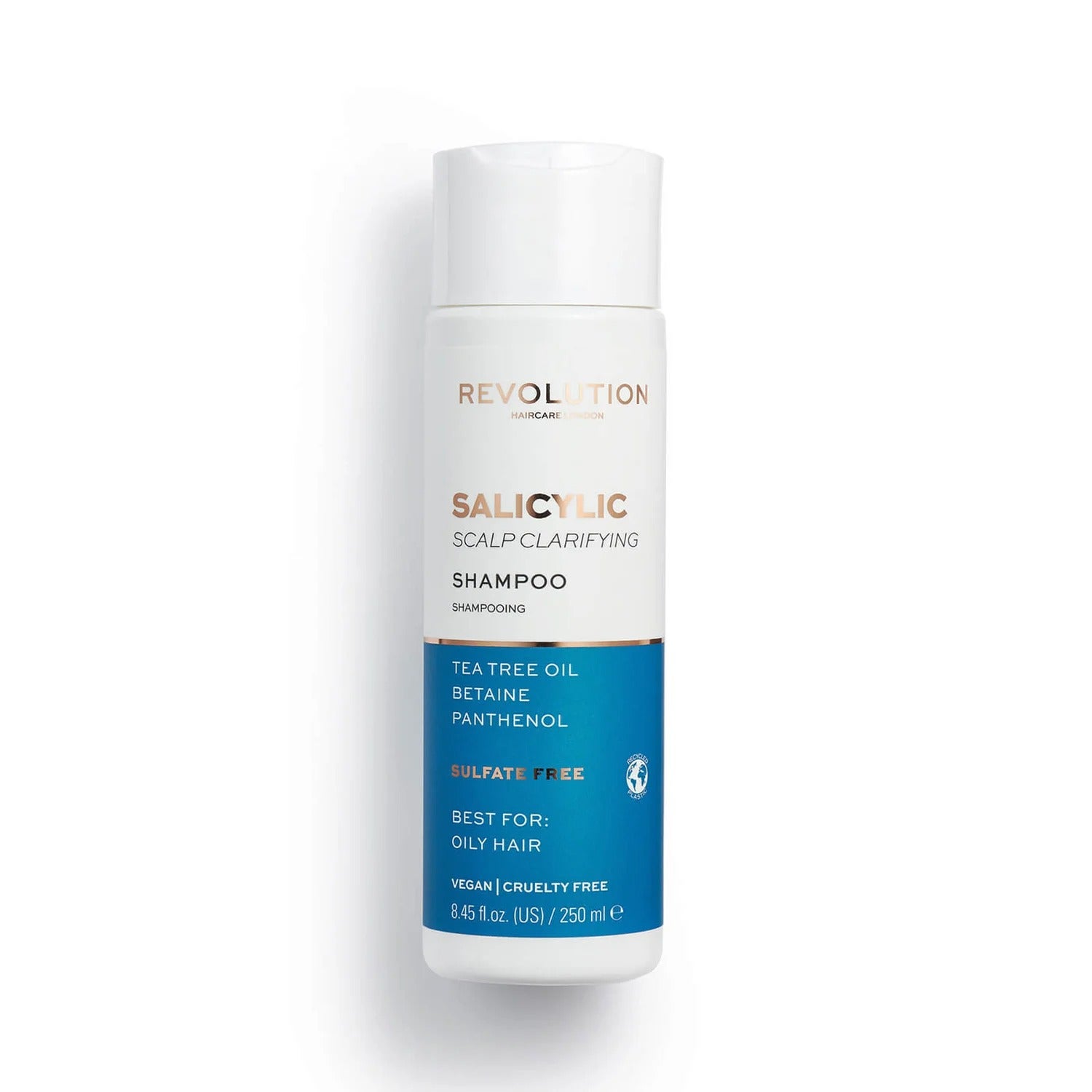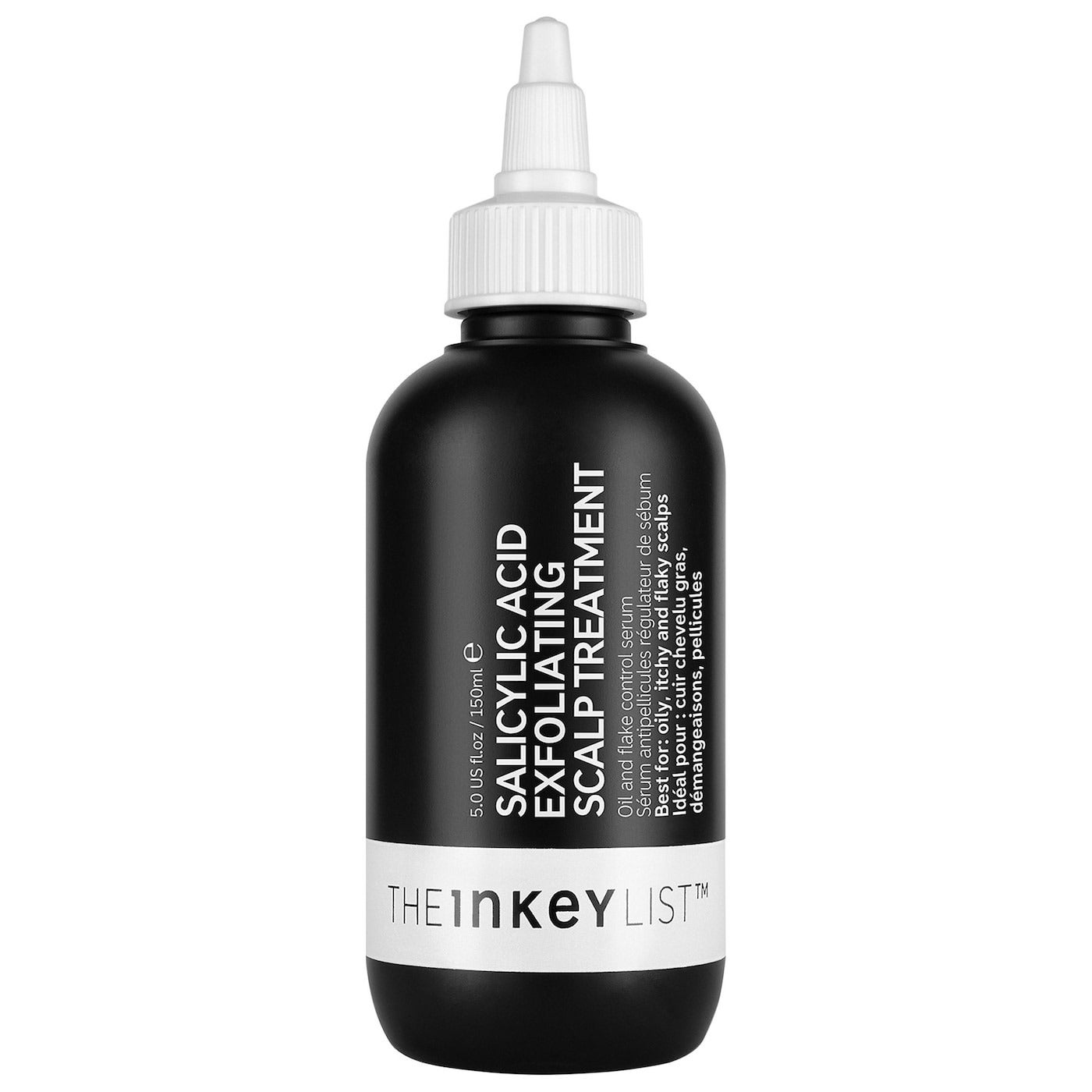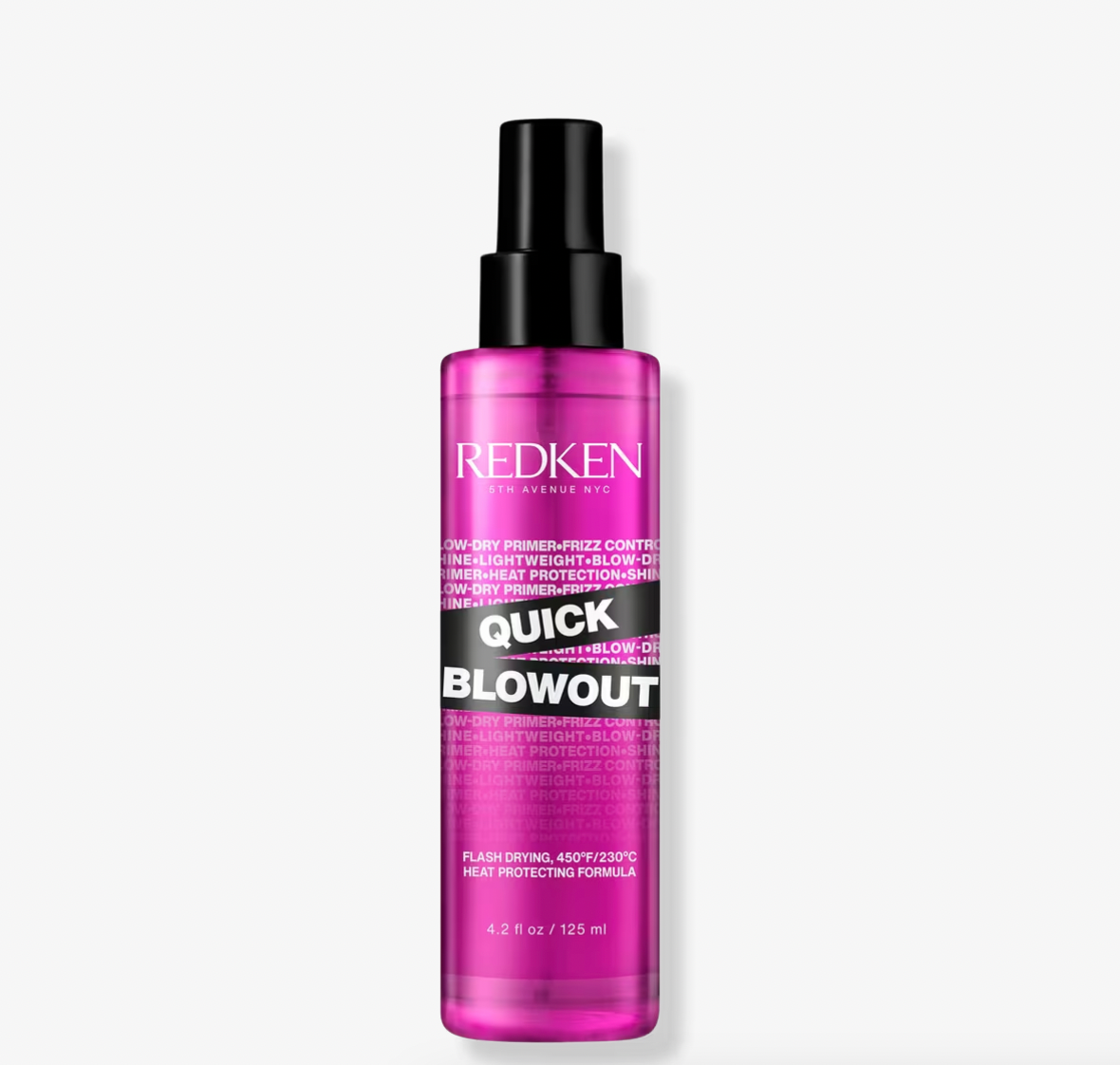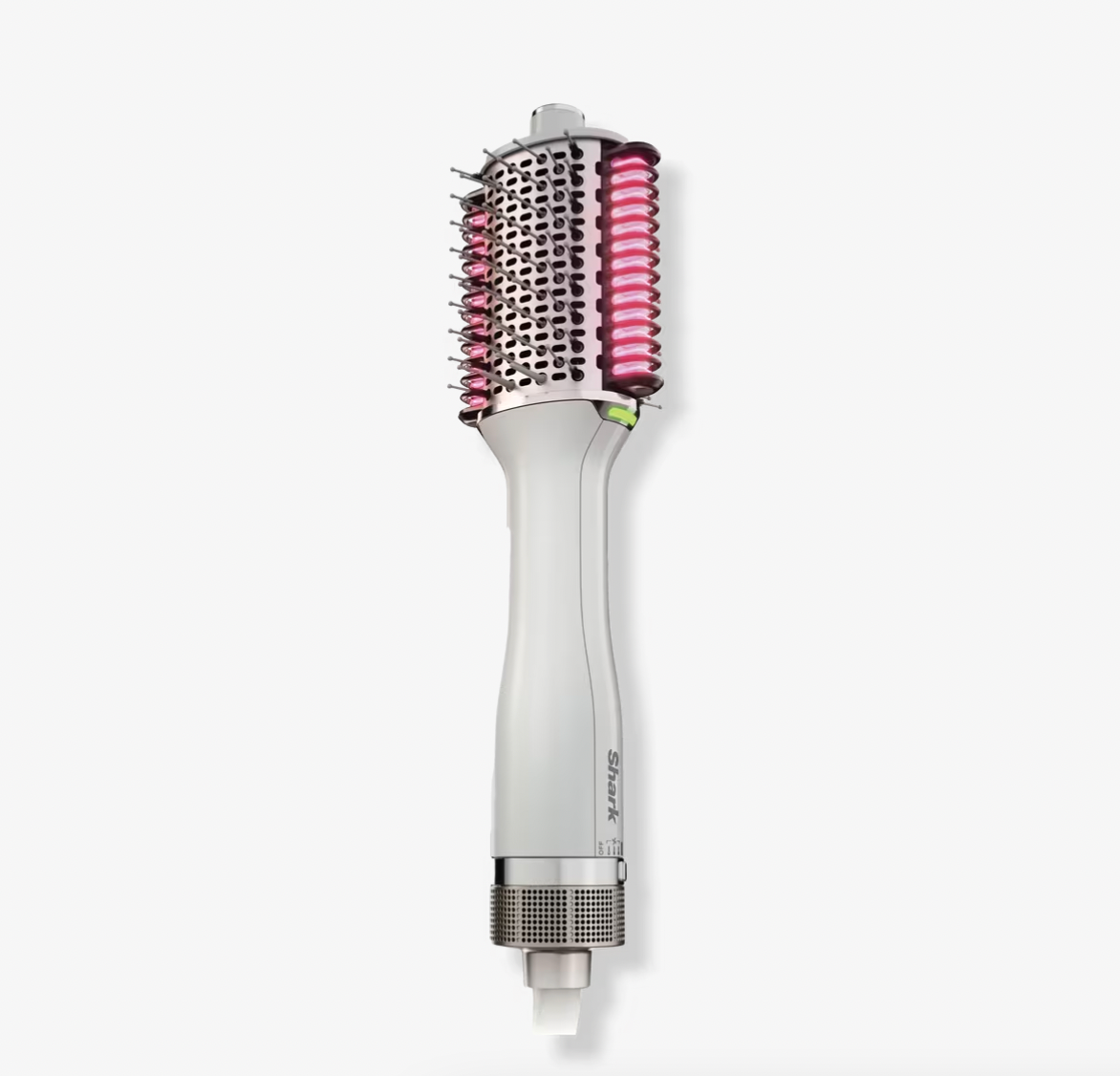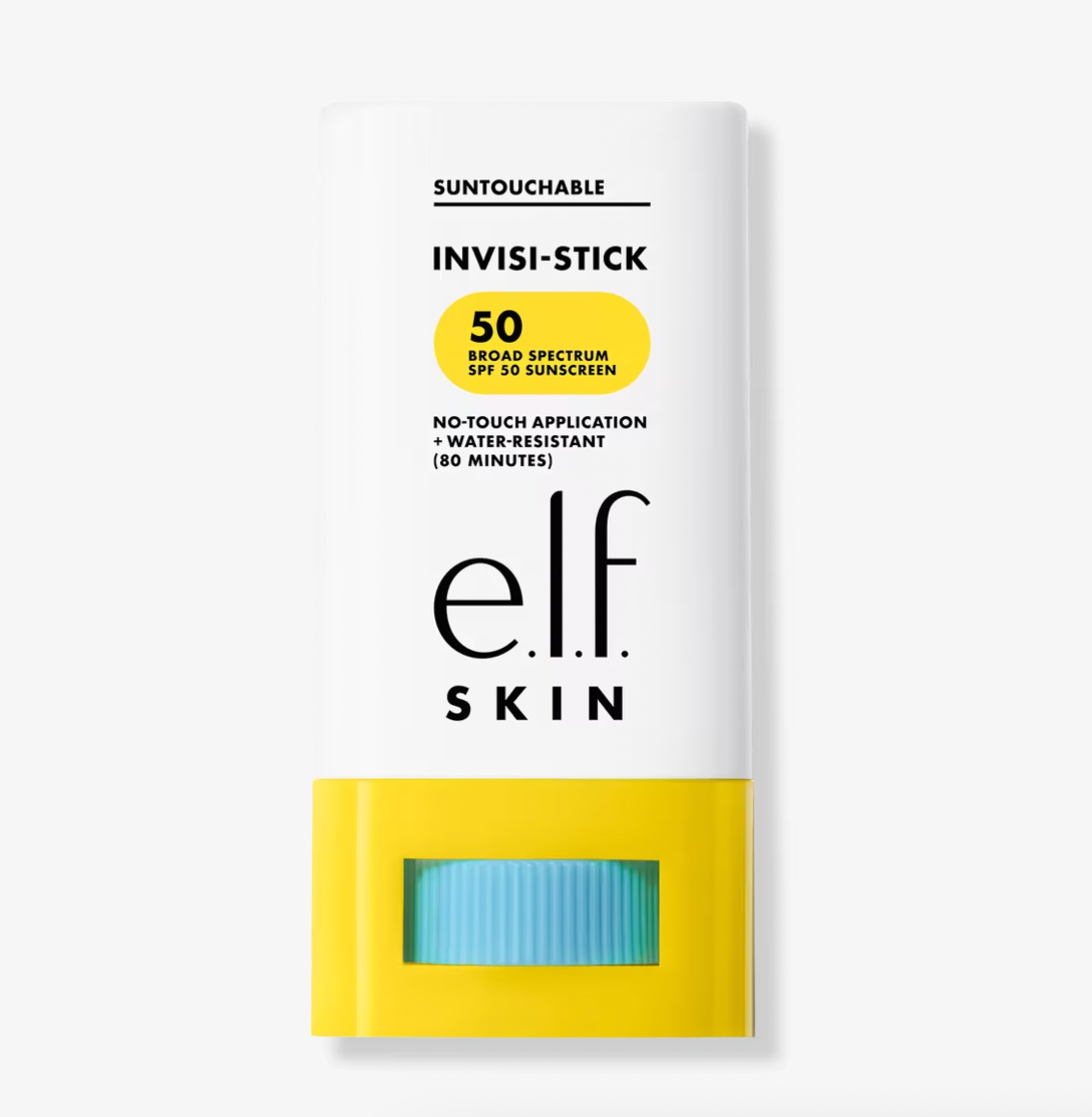Dandruff Is Curable & 5 Other Hair Myths Exposed By A Top Trichologist
All linked products are independently selected by our editors. If you purchase any of these products, we may earn a commission.
Photographed by Myesha Evon Gardner.
If the name Anabel Kingsley rings a bell, it’s probably because you’re acquainted with a particular hair product: The Elasticizer Deep Conditioning Hair Mask. You see, Kingsley is the daughter of Philip Kingsley, the late founder of that cult hair mask and the eponymous hair care brand. She’s also a trichologist in her own right, and arguably, one of the most sought-after.
When Kingsley isn’t at the helm of Philip Kingsley’s trichology clinic in New York, she’s transforming the hair of patients at its London residence, and that’s where I meet her on one rainy day in May. I’m there for advice on how to better take care of my hair, and that involves letting go of all of the pervasive and impractical hair myths that I’ve internalized over the years. It seems I’m not the only one keen to expand my hair knowledge, though. “How to use rosemary oil on hair”, “Post-partum hair growth treatments”, and “Do derma rollers work for hair growth?” are among a handful of commonly googled hair queries over the past few months.
AdvertisementADVERTISEMENT
In a couple of hours with Kingsley and her extended team of treatment specialists, my lengths and scalp were subject to a high-tech camera, a slew of new products and the most thorough hair wash of my life. So here’s everything I learned — and unlearned — about how to achieve healthy hair.
Myth: Dandruff Can Be Cured
Dandruff consists of fine, white flakes on the scalp and in the hair, and while there are an abundance of anti-dandruff shampoos out there, Kingsley revealed that dandruff is not actually curable. Rather, it comes and goes — but it’s easy to manage.
“Your scalp is skin. It’s just an extension of the skin on your forehead,” Kingsley told me. “If you didn’t wash your face every day, it would get greasy. On your scalp, there’s nowhere for those dead skin cells to go, so they get trapped at the root on your scalp and in your hair. The act of massaging when you shampoo exfoliates.” For this reason, Kingsley starts many of her clients off with an anti-dandruff shampoo, like Philip Kingsley Flaky Itchy Scalp Shampoo, $43, until they run out of the bottle. She advised keeping this in my bathroom cupboard and using it every other wash.
Not all flakes are created equal, though. Kingsley’s hi-tech camera uncovered some patches of seborrheic dermatitis (a common inflammatory skin condition where the flakes appear yellow and sticky), which is often mistaken for dandruff. I’m no stranger to this and thought that I had got it under control, but Kingsley’s advice was simple: to wash my hair more frequently. “[Seborrheic dermatitis is caused by] an overgrowth of a yeast called malassezia,” said Kingsley. She added that everyone has this yeast, but it tends to thrive in an oily environment. “That’s one reason why shampooing is so important,” said Kingsley, “because you’re depriving [the yeast] of its food source. Then you can use topicals like shampoos, tonics, and masks to help [further] reduce their levels.” I’ve found my groove every other day, but washing your hair as often as is manageable can help to improve the condition of your scalp.
AdvertisementADVERTISEMENT
Myth: You Should Go As Long As Possible Without Washing Your Hair
Recently trending on TikTok, the concept of “hair training” consists of going as long as possible without washing your hair to somehow “train” your scalp into not producing as much oil in future. I put the idea to Kingsley, who told me that you cannot train your hair or scalp. Now, imagine treating your face in the same way. Personally, I’d be dealing with greasy skin, excessive breakouts and eventually hyperpigmentation as a result of those spots. Considering your scalp is an extension of the skin on your face, regularly washing your hair — as often as you can manage depending on your lifestyle and styling habits — is beneficial.
What’s more, Kingsley advised shampooing twice: The first wash helps to dislodge dirt, oil and hair products, and the second makes sure it’s all lifted away. Kingsley’s top tip is to spend at least a minute massaging in the lather, concentrating on the scalp, rather than the lengths. If you can do it for longer without the arm ache, even better. (I timed almost three minutes when Kingsley’s treatment team washed my hair following our consultation, and it certainly extended the lifespan of my blowdry.)
Lastly, it’s a myth that washing your hair frequently will “dry out” your scalp. Kingsley told me that the scalp is a particularly oily environment, considering that it’s host to hundreds of thousands of glands inside hair follicles. Unless you’re shampooing two or three times a day, said Kingsley, it’s highly unlikely that washing your hair more regularly will cause a dry scalp.
AdvertisementADVERTISEMENT
For more volume, try the Philip Kingsley Body Building Shampoo $36. If it’s softer hair you’re after, I rate Philip Kingsley Re-Moisturising Smoothing Shampoo, 35$.
Myth: Glycolic Acid Is The Best Treatment For A Flaky Scalp
Those with dandruff will likely have spotted TikTok’s glycolic acid scalp trick, which involves using an exfoliating toner (often The Ordinary Glycolic Acid 7% Solution, $13) as a pre-shampoo treatment to eradicate a flaky scalp. Having tried it myself, I know firsthand that it’s beneficial, but it seems there’s an even better solution, according to Kingsley. Enter: salicylic acid.
Like glycolic acid, salicylic acid is also a chemical exfoliant, but it’s far more gentle on sensitive, reactive skin. Plus, it can penetrate the skin more deeply, breaking down buildup caused by dead skin cells, sebum (oil) and hair products. Kingsley advised me to use a salicylic exfoliator on the top of my scalp where I usually see dandruff once a week, and to slather the ends of my hair with Elasticizer before shampooing twice and then conditioning.
Try The Inkey List Salicylic Acid Exfoliating Scalp Treatment, $17. If you’d rather skip a step, consider a shampoo with salicylic acid, like Revolution Haircare Salicylic Acid Clarifying Shampoo for Oily Hair, $12.50, or my new favorite, L’Oréal Paris Elvive Hydra Pure Shampoo with Hyaluronic and Salicylic Acids, $4.97.
AdvertisementADVERTISEMENT
Myth: Hair Growth “Hacks” Work
Scalp massagers can improve blood flow to the scalp, and this increased circulation is believed to encourage hair growth. Realistically, though, it’s unlikely that most of us are massaging for long enough to see real results, Kingsley told me. If you’re considering buying a scalp massager for exfoliation, Kingsley reveals that your fingers are just as good and they are also much less likely to abrade your scalp or tangle your hair.
Using rosemary oil for hair growth is questionable, too, suggested Kingsley. There is a lack of clinical evidence to suggest that massaging your scalp with the herb-infused oil actually works. One study compared rosemary oil with 2% minoxidil — the only clinically-proven hair growth treatment. The problem here, Kingsley told me, is that 2% minoxidil is relatively low. Sure enough, products which contain the hair growth agent and are available over the counter contain a higher strength of 5% minoxidil. In short, any evidence that suggests rosemary oil may boost hair growth is likely to be anecdotal rather than scientific.
Myth: Heated Hair Tools Are Bad For Your Hair
Since having my hair cut into the “butterfly lob”, I style my layers with a heated brush — the Shark Smooth Style Hot Brush and Smoothing Comb, $129.99 — which I love because it makes light work of blow-drying. Still, I worry about hair damage, so I put my query to Kingsley. “Anything that gets quite hot isn’t great,” she told me, adding, “You can treat your hair like a delicate flower all the time and that would be great for its health, but your hair is there to have fun with and if you want to style it, you’ll want some heat on it.” As such, a pre-shampoo conditioning treatment like Elasticizer — used weekly — can help maintain the integrity of hair while preventing breakage. I follow this with shampoo and conditioner as usual, then a generous amount of heat protector (Redken Quick Blowout Accelerated Blowdry Spray, $28), and my hair feels strong and soft. Kingsley advised paying special attention to the front of my hair, particularly my curtain bangs and top layer of my hair, which I subject to the most heat.
AdvertisementADVERTISEMENT
Alongside heat protection, it pays to apply sunscreen to exposed parts of your scalp. Kingsley’s camera showed that my temples were darker in color (indicating skin damage) compared to the rest of my scalp, which is protected by my hair. Now that the weather is sunnier, I apply SPF much higher on my hairline to shield my skin against UV rays. The e.l.f. Suntouchable Invisi-Stick SPF 50, $14, is lightweight, invisible, and doesn’t make my hair greasy.
Myth: Hair Shedding Is Worrying
Everyone’s “normal” is different when it comes to shedding, said Kingsley. The American Academy of Dermatology reports that we can lose between 50 and 100 hairs a day, and for some, it can be a little more. You might also experience some seasonal hair shedding, said Kingsley, which typically occurs during September and October. If you leave four or five days in between shampooing, it’s also likely that you’ll experience more hair shedding because you’ll naturally have an accumulation of hair follicles that have been dislodged. Personally, my flaky scalp could have been increasing my daily hair fall as it impacts the integrity of the cuticle, causing the growth of weaker hair, Kingsley concluded. That’s why washing and exfoliating regularly came highly recommended, as did using a hair-friendly accessory like a claw clip. “They don't have any sharp edges and aren’t overly heavy,” said Kingsley.
Lastly, I asked Kingsley when might be the right time to seek help from a hair specialist if you think you’re losing more hair than usual: “Hair telogen effluvium [the excessive shedding of hair] is not subtle,” Kingsley told me. In this instance, you might notice that you’re losing up to around 300 hairs a day and that the shedding lasts much longer. If you’re concerned, consider paying a visit to a qualified trichologist for tests.
AdvertisementADVERTISEMENT







